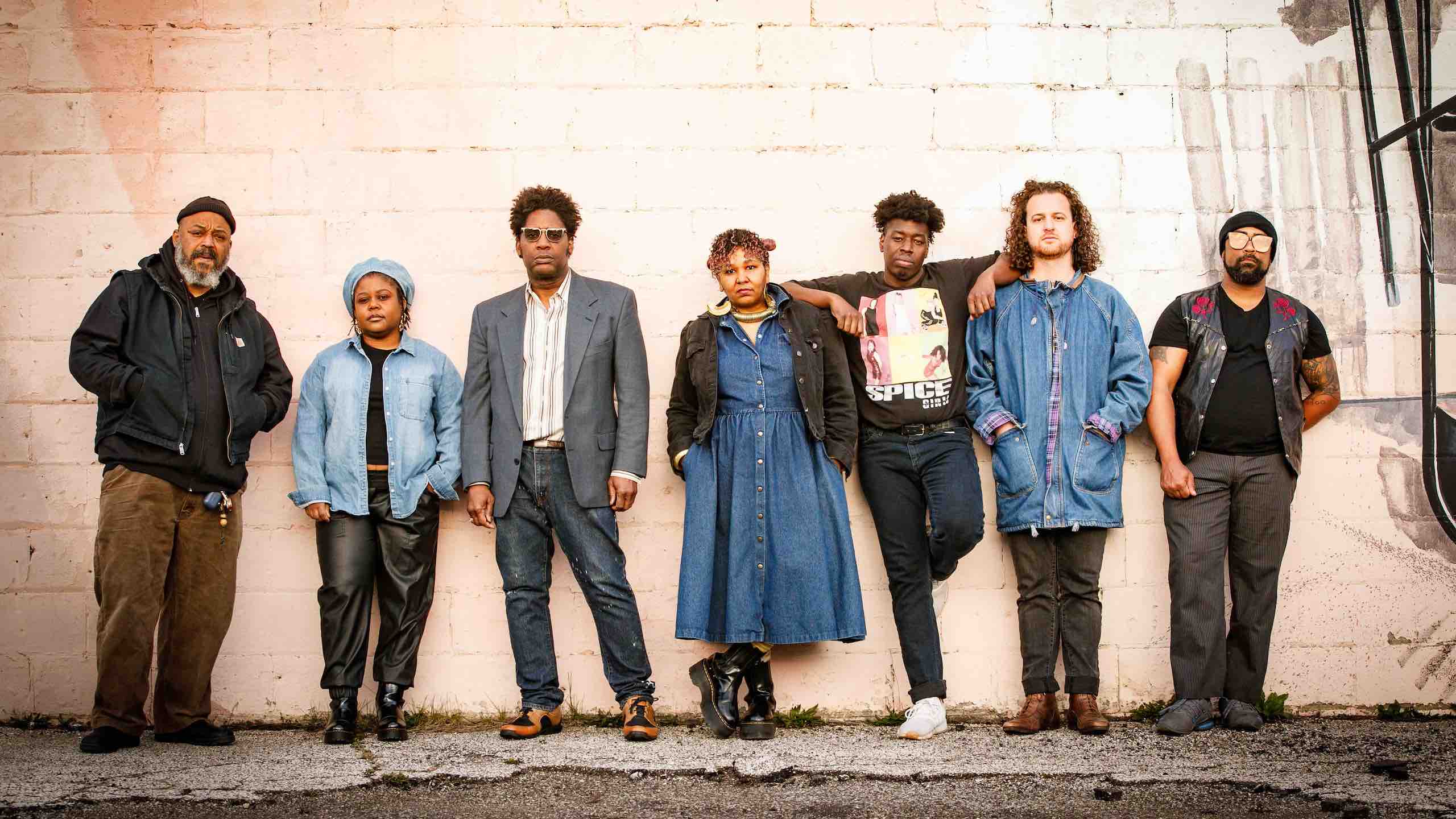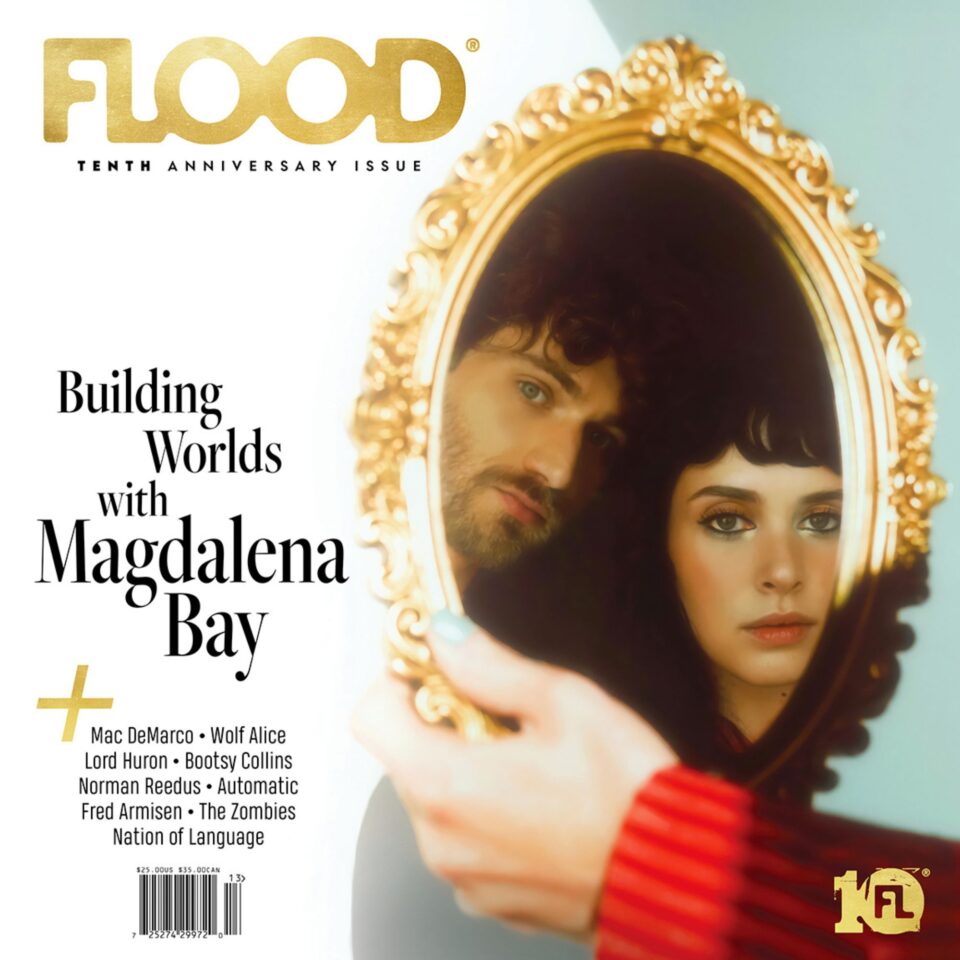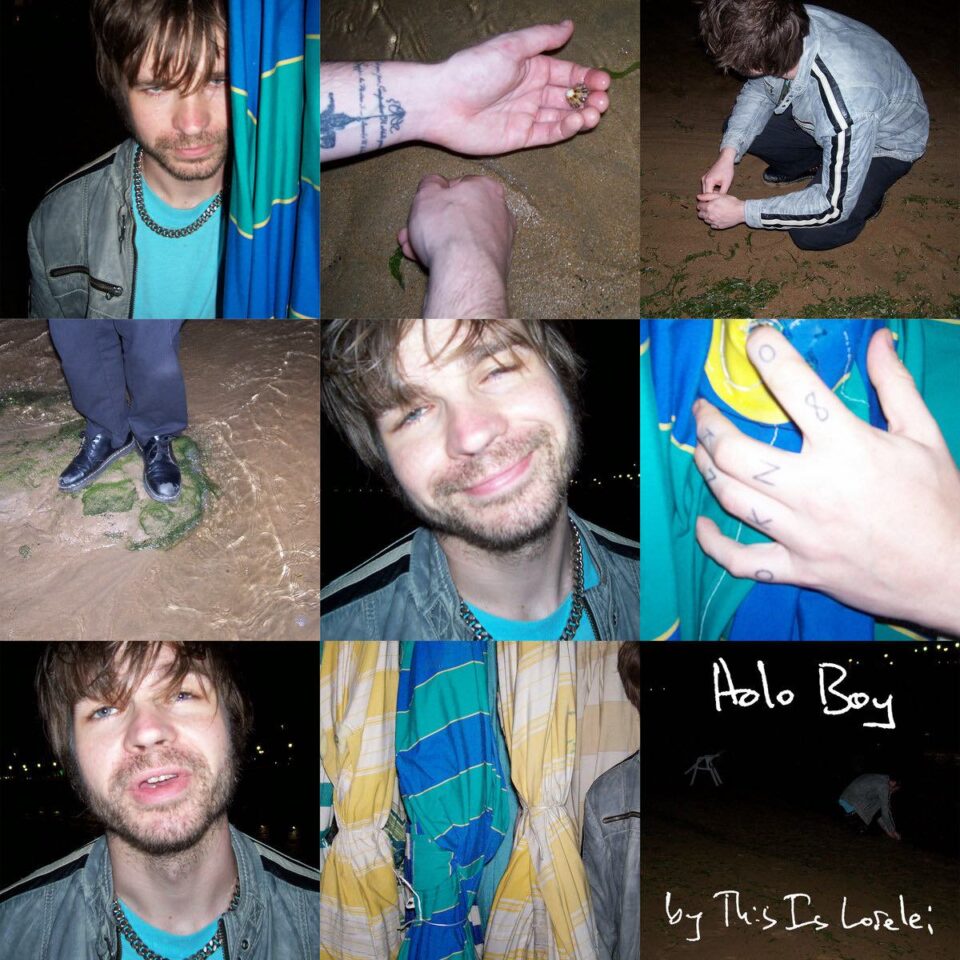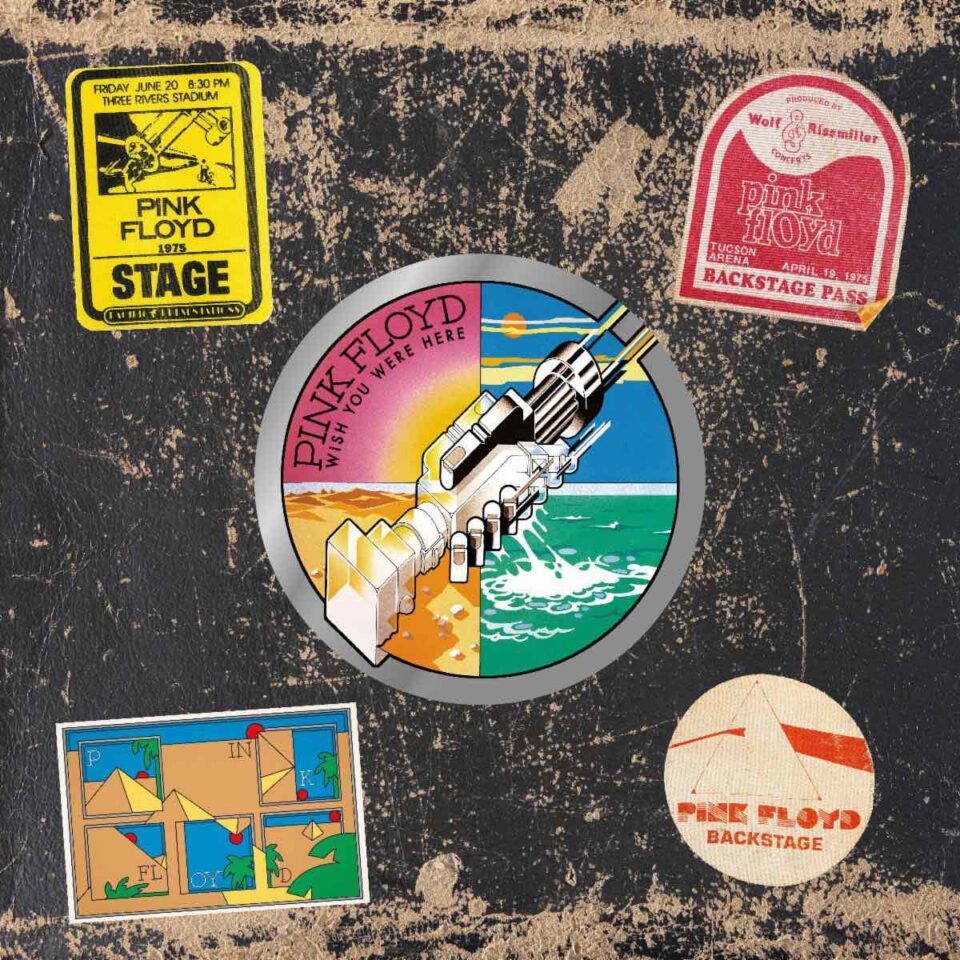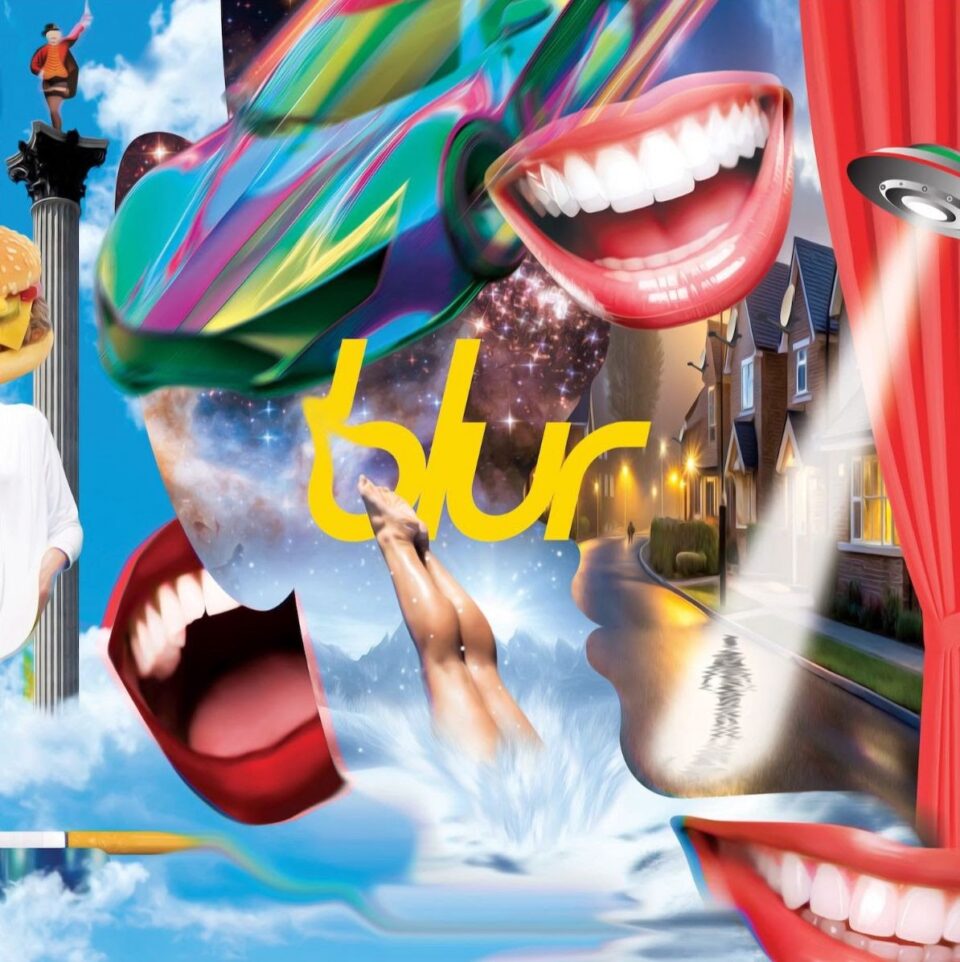When you consider that all seven members of Mourning [A] BLKstar’s lineup are equally involved in the compositions they churn out—their individual sets of diverse influences helping to steer a ship largely fueled by improvisation—it’s no wonder that each of their records snakes through as many genres as they do. Celebrating 10 years together in 2025, their new album Flowers for the Living feels particularly injected with this impressively unified vision juggling as many musical quirks as a seven-piece band could possibly hold. And that’s before factoring in the project’s guest list, which notably includes industrial-rap trickster Fatboi Sharif and Southern rocker Lee Bains.
Notes of soul, hip-hop, dub, jazz, R&B, and everything in-between infiltrate these 10 songs, though to hear all seven members of the band list off their biggest inspirations in quick succession makes you realize just how many more influences factor into their sound in more subtle ways: funk, punk, no wave, and ambient jazz, among many other ambiguous descriptors. Ahead of the album’s release this Friday via Don Giovanni, we had M[A]B outline some of the songs and artists that shaped their individual visions for their unified project, with each band member contributing two songs to the playlist featured here.
Pre-order Flowers for the Living here, and check out the band’s writeups on each song included below.
JAH NADA (bass/production)
Thundercat, “A Fan’s Mail (Tron Song Suite II)”
Drum breaks, great basslines, imaginative songwriting, and a cat named Tron. I am a person of simple, humble interests.
The Gories, “Nitroglycerin”
How can you not love a band that set out to be the worst band in the world? Mick Collins is the Kareem Abdul-Jabbar of rock ’n’ roll.
JAMES LONGS (lead vox)
David Bowie, “Black Star”
The song that challenged and challenges this band—the lyric “Someone else took his place and bravely cried, I am a blackstar, I’m a blackstar!” inherently holds great weight and responsibility within the daring nature of this bold and continuously challenging proclamation.
Sly and the Family Stone, “Everybody Is a Star”
This song takes the very relevant subjects of racial injustice, inequality, and the need for respect and places it appropriately as a universal necessity. By not framing the subject as a “Black” issue, there’s no condemnation of the Black experience as self-imposed. It’s a human birth right.
DANTE FOLEY (drums)
Modest Mouse, “Truckers Atlas”
Jeremiah Green’s movement on the kit in this one really expressed a freedom I yearned for when I started playing a decade and some change ago. Upon his departure toward the end of 2022 I found myself revisiting Lonesome Crowded West again, and now having the physical language to reinterpret some of those parts, I see my recent playing as a bridge to the love I have for this band and Jeremiah as a drummer.
The Roots, “What Goes On, Pt. 7”
So much of how I perceive pocket comes from this album—with this track specifically, with its groove and stoicism combined with choice pauses, playing such a huge role in how I interact with the lyrics sung, as well as how I communicate space with my bandmates. So much of the track involves very generous and tasteful melodies and grooves working together to bolster and exaggerate space.
LATOYA KENT (lead vox)
Me:You, “The Current History of Blue”
The lyric from this piece started as a poem. The premise connected to lovers who share other loves. A forlorn story of open hearts and belonging to no one. As M[A]B worked up Flowers For the Living, I felt torn between what I was and what I was becoming. Someone said to me after listening that my performance felt like poetry. This song is so girthy (yes, I meant that), and sits heavy on me and to the listener. The entirety of the album feels like that. Real and thick. Honest and a bit of a close talker with fresh breath.
Kim Gordon, “Bye Bye”
When I heard this song I felt electric inside. I’ve been a Sonic Youth fan since I was a teen, and feel like Kim is a true riot grrrl, as am I. The ability to be totally femme in a male-dominant world of music always intrigued me about her. The power in her softness and her scream always felt motherly, even before she gave birth. To see her wield her instrument and be timeless in tandem, honoring her hip-hop and alt roots with so much grace and authenticity—she is one of my favorite girls, and I’m stoked and proud to see her burning shit up more than ever.
PETE SAUDEK (guitar/keys)
Salami Rose Joe Louis, “Keynoodles”
Salami’s sound has brought me a lot of serenity and sonic depth and expansion over the years. I like how she writes raw emotion into her rich chords and percussion and humbly applies her heady jazz/classical/hip-hop foundation underneath it all. This track is more minimal compared to her rhythm-heavy, fast-paced grooves—I like that she wrote a single lyric at the end of an instrumental song: “Take a shower, go to bed, tomorrow’s bound to be better.”
Makaya McCraven, “Black Lion”
Makaya’s one of my favorite drummers and composers. I think his approach as a lead jazz drummer in the many iterations he plays in is bold, and this song is crazy.
THERESA MAY (trumpet)
Kokoroko, “Ti-De”
The horns! Kokoroko is one of my favorite sounds, and seeing them live was a spiritual and emotional experience I’ll never forget. This song is calming and introspective; and I like how the guitar line interacts with the groove before the horn line enters the mix. I really enjoy Sheila’s trumpet playing and she is definitely one of my inspirations.
Nala Sinephro, “Continuum 2”
I discovered Nala Sinephro a few years ago, and I remember listening to this entire album [Endlessness] in one sitting when it came out. The entire album is magic, but I was immediately sucked in by the sounds on this track—dreamy, reflective, warm, and intense. Sheila Maurice-Grey (flugelhorn) also happens to be featured on this track.
RA WASHINGTON (lead vox/drum machine/production)
Sly and The Family Stone, “Poet”
“Poet” is a song that often comes to my mind as perhaps my favorite song from Sly. It was recorded at a time where there was some tension in the band, and Sly was being pressured by the label heads to crank out more material. So much folklore is about There’s A Riot Going On, but when you listen to “Poet,” the lyrics stand out (“I’m a songwriter, a poet)—this was his thesis statement, like, “Look, I am a poet, I’m not a civil rights leader, I’m not no role model, I’m not a star…I’m a songwriter, a poet.” In my mind there is no more noble an occupation, and no more honest a statement than that. And the groove of that record!
Gil Scott-Heron and Brian Jackson, “Home Is Where the Hatred Is”
My mother, Bobbi Lynn, gave me this record when I was about 12 on a cassette mixtape she made of perfect poetic sentiments in song. She’d found one of my notebooks and asked me if I wanted to be a writer. I told her I think so, but I also want to be a singer. She said that I probably couldn’t make it as a singer, but I could write the songs. Couple of days later she hands me this tape and said, “If you want something, you have to love it first.” My mom passed in January of this year and she was right about it all. That song by Gil Scott-Heron was the first lyric I learned by heart, and I sing it in my head all the time. She later told me that she was glad I didn’t listen about the singing, she was just trying to give me a more realistic goal. Miss her.

